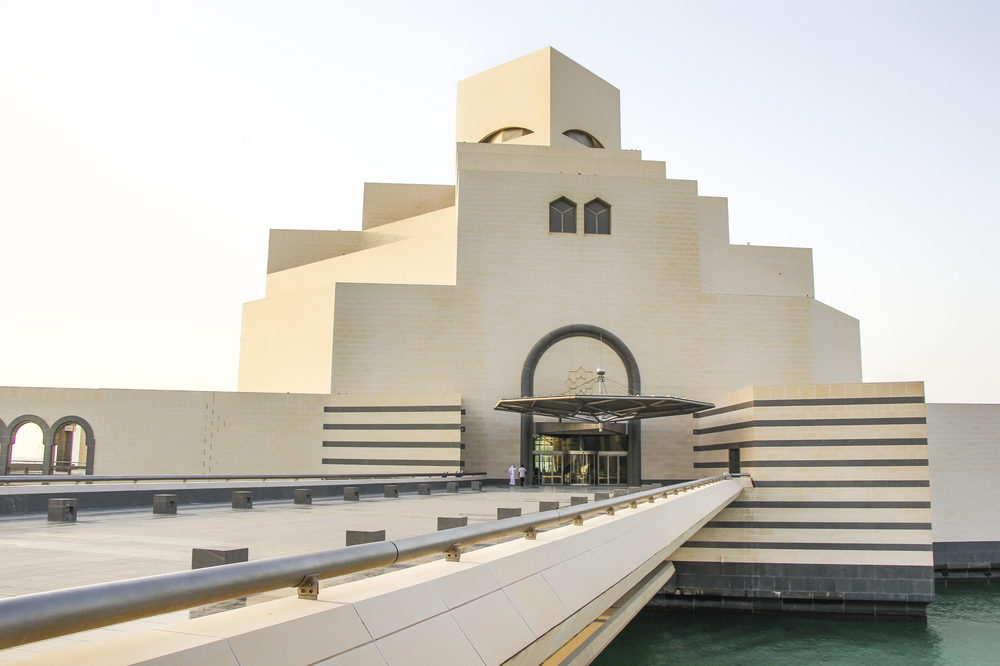CASE STUDY-Doha’s international arts scene is flying high but local artists are still often in the shadows
| Qatar Museums Authority | |
| Chairperson |
Sheikha Mayassa Al Thani |
| Headquarters |
Doha, Qatar |
| Number of museums and galleries | Eight |
| Estimated annual acquisitions budget |
$1 billion |
COMPANY OVERVIEW
The 2008 opening of the $1.6 billion I.M. Pei-designed Museum of Islamic Art in Doha put Qatar firmly on the art world map. Since then, the Gulf nation has featured a blockbuster Damien Hirst exhibition, hosted record-setting art auctions, installed a massive Richard Serra sculpture on its waterfront, filled its new $17 billion airport with public art and established numerous museums and other art institutions, with many more in the works.
The driving force behind most of this push has been the Qatar Museums Authority, set up by the royal family and helmed by the emir’s sister, Sheikha Mayassa Al Thani, who has quickly become a major player in the global art world.
But some express concerns that Doha’s high profile in the arts has been built on paying top dollar for international works and shows rather than cultivating and promoting local talent.
MAJOR MILESTONES
- 2005: Qatar Museums Authority (QMA) set up to promote the country as a regional arts hub.
- 2008: Museum of Islamic Art, a $1.6 billion project designed by renowned American architect I.M. Pei, opens in Doha.
- 2013: Sotheby’s auction in Doha takes in $15.2 million, a record in total sales for a contemporary art auction in the Middle East.
- 2015: Fire Station Artist in Residence opens under the auspices of the QMA to provide support for emerging Qatari artists
CHALLENGES FACED
Despite the large sums of money invested recently in the arts by Qatar as well as Dubai and other Gulf nations, “in the overall world scene, Arab artists are still barely a blip when you look at fair sales”, says Heather Alnuweiri, who co-runs Al Markhiya Gallery, the oldest privately-owned gallery in Qatar. In contrast to the focus often placed on big-name international artists in Qatar, Al Markhiya only shows contemporary Arab art and features up-and-coming local artists under the age of 40 in group exhibitions several times a year.
Though many of the gallery’s artists want to respond to political events in Egypt, Syria and elsewhere in the Arab world through their art, Alnuweiri says the local market isn’t quite ready for such challenging works yet: “People here generally prefer more decorative art, that’s where the public is in its overall artistic development. We do have some collectors in Qatar who are incredibly savvy and spend a lot, but those voracious buyers are from a very different group that spends time in other cities. The general public is more cautious with their purchases”.
Local artists also need more opportunities to develop, Alnuweiri says: “Currently, the way most artists here work is at home. Most homes have these big walls around them and non-family members don’t generally get in, so it really cuts down on opportunities for artists to interact and share experiences”.
She says the Qatari artists she works with would like to have more studio space available and more support from the government for going abroad to further their studies or do apprenticeships or internships.
“Local artists need to be out and immersing themselves in a culture where art is the lingua franca and everyone is living and breathing art”, Alnuweiri says. “There’s not a place like that in Qatar yet”.
OPPORTUNITIES BEING ADDRESSED
The Qatar Museums Authority’s latest initiative, Fire Station Artist in Residence, promises to help encourage some of that synergy by offering nine-month residencies to Qatar-based artists that include not just studio space but opportunities to meet and be mentored by curators and arts professionals.
A new arts centre planned for the Msheireb development, a 750,000 square-meter urban renewal project in downtown Doha, would also “go a long way towards giving artists a place to exchange ideas,” says gallerist Alnuweiri.
| KEY TAKEAWAYS |
Major investments by the Qatari royal family have significantly boosted the country’s art-world profile. However, outside of massive investments in the building of big-name museums, art education and awareness, including investing in art, needs to be formulated for the general public. |
|
For the moment, other than a small group of dedicated collectors, the general public still has a conservative attitude towards art-buying. Asset managers specialising in art have a big opportunity to build the sector. |
|
|
Qatar-based artists need more support, studio spaces and opportunities to be mentored and interact with peers in order for a strong local scene to develop as well. |
© Copyright SalaamGateway.com 2015
